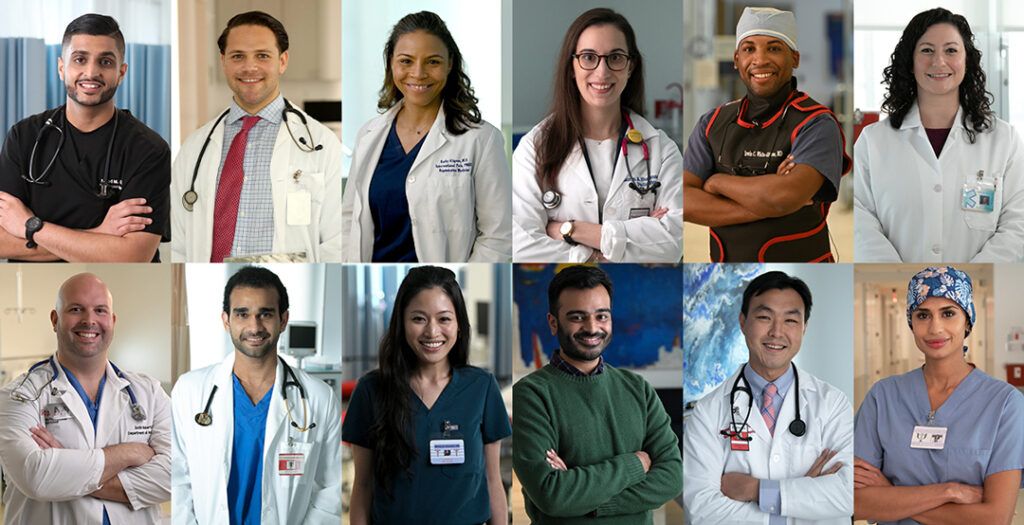If you’re interested in a medical career, you’ve likely heard talk of a mounting physician shortage in the United States. But, without digging into the data, it can be difficult to fully comprehend.
The Association of American Medical Colleges (AAMC) regularly tracks current needs within the medical workforce in combination with data-driven projections of what’s to come. We’re diving into the details you need to know about the US doctor shortage.
3 Common questions about the physician shortage
Information surrounding the nation’s doctor shortage is complex. There are several metrics to take into account, numerous factors contributing to the deficiency, and a range of proposed solutions. So, what does all of it mean for aspiring physicians?
Reviewing the answers to some FAQs about the US physician shortage may help clear some things up:
1. Is there a shortage of doctors in the US?
The short answer is yes. Currently, more than 83 million people in the US live in areas in which access to a primary care physician is scarce. According to data from the AAMC, the United States could see an estimated shortage of up to 124,000 physicians across all specialties by 2034.
Consider this more detailed breakdown of the projected shortages by specialty area:
- Primary care: between 17,800 and 48,000 physicians will be needed
- Non-primary care: between 21,000 and 77,100 physicians will be needed
- Surgical specialties: between 15,800 and 30,200 physicians will be needed
- Medical specialties (e.g., cardiology, oncology, pulmonology): between 3,800 and 13,400 physicians will be needed
- Other specialties (e.g., anesthesiology, emergency medicine, addiction medicine): between 10,300 and 35,600 physicians will be needed
Shortages to this degree present a looming public health crisis. More and more patients will experience delays in accessing medical care, which could have devastating results when it comes to the health of our communities and overall healthcare costs.
2. Why is there a physician shortage?
While the driving force of the doctor shortage in the US can’t be tied to one specific cause, there are a number of contributing factors. Primary among them is the fact that human life expectancy is longer than ever before—and as the population ages, healthcare needs increase.
This also means a growing number of practicing physicians are nearing retirement age. One survey found that around 18 percent of the existing physician workforce has intentions to retire or opt out of patient care within the next year.
Generally speaking, the nation’s health is also decreasing, which requires additional medical professionals. Approximately six in 10 adults live with one or more chronic conditions that must be managed by physicians—things like diabetes, cancer, heart disease, lung disease, and Alzheimer’s. And with a greater portion of the population gaining access to health insurance over the last decade, an increasing number of patients can afford to seek care.
Finally, access to medical school poses a significant barrier to filling the gap presented by the US doctor shortage. Training new physicians requires extensive resources, and there are only so many spots available at US institutions.
3. What can be done to fix the doctor shortage?
One effort that is currently in place to prevent care shortages from increasing too rapidly is an influx of non-physician care. We’re seeing a growing number of nurse practitioners and physician assistants begin to fill gaps. It’s important to note, however, that states have varying regulations when it comes to non-physician care.
Aspiring physicians may also notice an increase in opportunities for debt relief. Student loan forgiveness options are being offered to physicians entering particularly high-demand areas of practice, such as primary care and rural healthcare.
Because US medical schools are having a hard time keeping up with the demand for new doctors, med school hopefuls also have the option to pursue international Doctor of Medicine (MD) programs.
“Until the United States builds enough medical schools for its own needs, we’re going to continue to have a fairly significant shortage,” Dr. Richard Olds, president of St. George’s University (SGU) told the Commercial Appeal in a recent interview. “International medical graduates are going to have to fill the void.”
As long as students seek out an international program that has received and maintained proper medical school accreditation, they should be able to complete residency and practice in the US upon graduation.
Help ease the US physician shortage
The doctor shortage is no longer something that’s simply looming in the distance—we’re experiencing it now, and it’s important to fill those gaps as quickly as possible.
If you have your sights set on becoming a physician, it’s worth looking into the most in-demand specialties, possible opportunities for debt relief, and even the possibility of attending medical school abroad. There are several unexpected benefits to studying internationally: students get to see a wider variety of illnesses and they can learn about cultures and healthcare systems different from their own.
Learn more about the possibilities that await in our article “6 Little Known Perks of Attending an International Medical School.”


